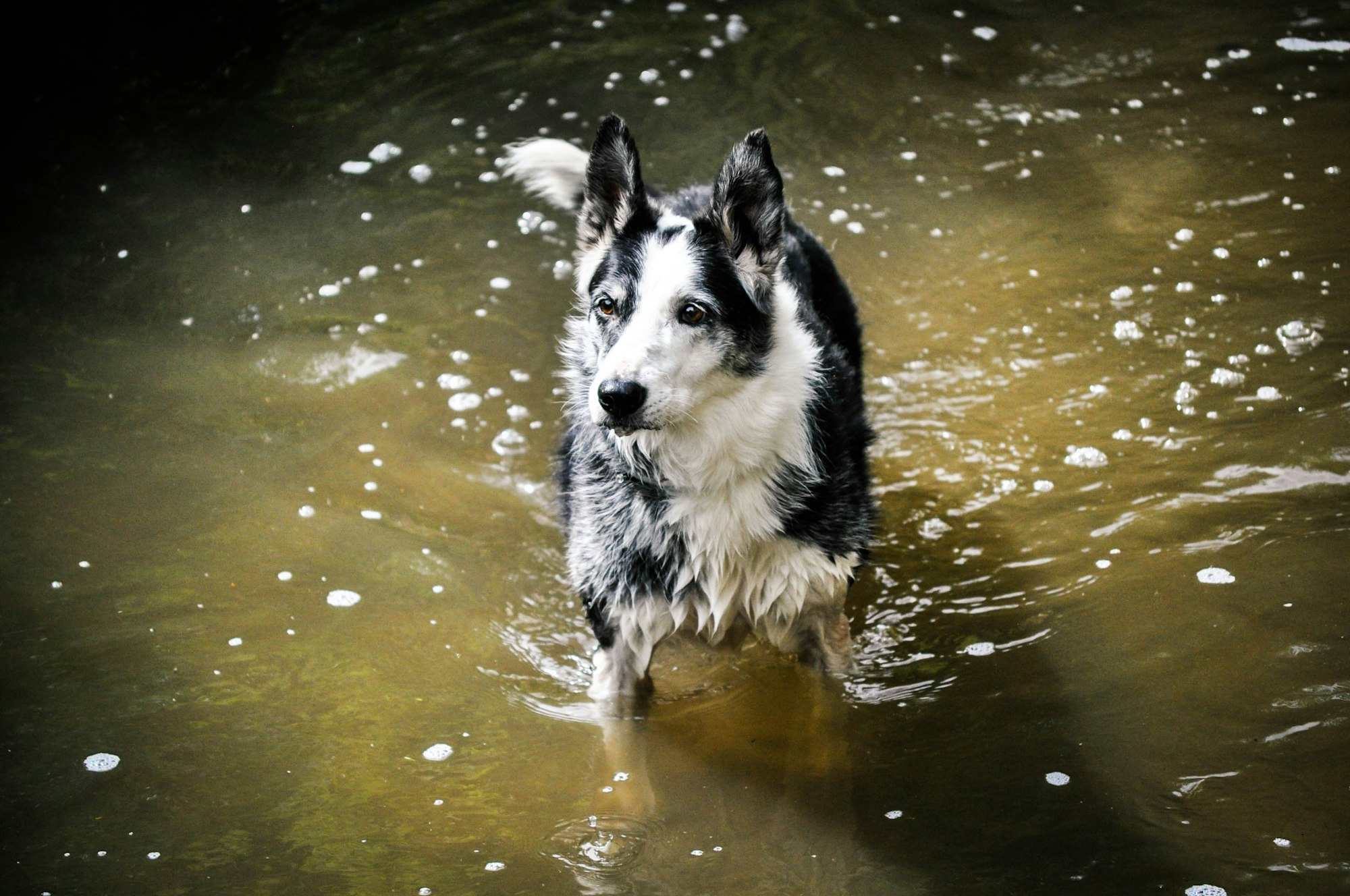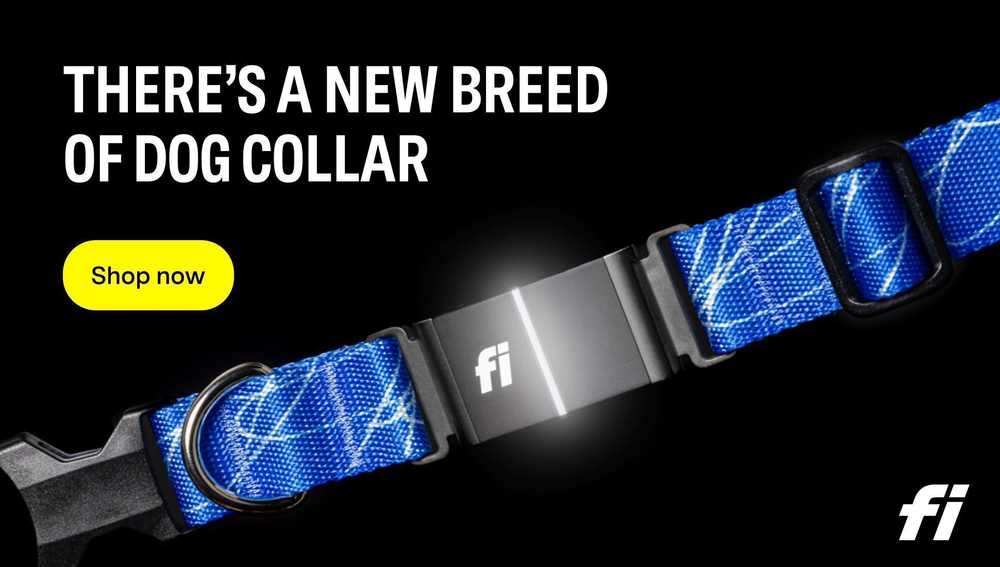Huskies, known for their striking appearance and impressive endurance, are often associated with arctic landscapes. But do these cold-weather dogs have an affinity for water? This article aims to explore the relationship huskies have with water and shed light on their behavior and preferences when it comes to aquatic environments.

Special Offer Alert!
Before we dive into the intriguing relationship between huskies and water, here’s some fantastic news for all dog owners! Use the code HUSKY20 to snag $20 off on the Fi Dog Collar, your ultimate ally in pet management. Equipped with a sophisticated geofence feature, the Fi Dog Collar not only tracks your husky’s location and activity through the Fi app but also keeps you alerted if they venture too far from home.
Don't let your adventurous buddy wander off—secure their safety with TryFi’s reliable technology. Click over to TryFi.com now to learn more and take advantage of this offer.
Do Huskies Like Water?
Exploring the world of huskies, we dive into the fascinating topic of their affinity for water. From their Arctic origins to their instinctual behaviors, we'll uncover the secrets behind why these majestic creatures are drawn to the aquatic realm. Get ready to uncover the truth about huskies and water as we delve into their history and delve into their innate behaviors.
Huskies and Their Arctic Origins
Huskies and Their Arctic Origins play a crucial role in comprehending their fondness for water. These dogs are descendants of the Siberian Husky, a breed meticulously created by the Chukchi people of Northeastern Asia to suit their nomadic way of life and endure the unforgiving Arctic environments. Residing in snowy regions with freezing temperatures, huskies have developed specific adaptations that enable them to flourish in such conditions.

One of the main factors behind huskies' affinity for water lies in their connection to their arctic heritage. In the Arctic, melted snow serves as a vital source of hydration, thus huskies have naturally developed a predisposition towards water. Their dense double coat, acting as insulation, safeguards them from the cold water, enabling them to stay warm while engaging in swimming activities.
Huskies possess a remarkable level of energy, making them highly active and playful canines. Water-related pursuits like swimming offer them an avenue to release their energy and keep themselves mentally and physically stimulated. Additionally, their intelligence enables them to quickly grasp and enjoy swimming, turning it into a positive and enjoyable experience.
Although huskies generally revel in swimming, individual preferences can indeed differ. Some huskies may prefer shallow paddling pools or frolicking in sprinklers, while others might feel more at ease in deeper pools or natural water bodies such as lakes or rivers.
The inherent affinity for water displayed by Huskies and Their Arctic Origins is a result of their distinctive lineage. The breeding process undergone by their ancestors, their nomadic lifestyle, and their ability to adapt to cold environments have collectively shaped their relationship with water. Acquiring an understanding of their background can assist dog owners in providing delightful water activities for their huskies while ensuring their safety and well-being.
Instinctual Behaviors of Huskies
When it comes to the instinctual behaviors of huskies, there are several key factors to consider:
1. Hunting: Huskies have an instinctual drive to hunt and explore their surroundings. The instinctual behaviors of huskies, such as hunting and exploring their surroundings, play a significant role in their behavior.
2. Pack mentality: Huskies are pack animals by nature, and they have a strong sense of hierarchy within their pack. The instinctual behaviors of huskies, driven by their pack mentality, can influence their behavior around water.
3. Water-resistant coat: Huskies have a double coat that is highly water-resistant. The instinctual behaviors of huskies, such as their water-resistant coat, contribute to their ability to withstand cold and wet conditions.
4. Preference for cold environments: Huskies are bred to thrive in cold climates and are known for their tolerance of low temperatures. The instinctual behaviors of huskies, influenced by their preference for cold environments, may affect their attitude towards water-related activities.
5. Lack of swimming skills: While huskies are generally strong and agile, they are not natural swimmers like some other breeds. The instinctual behaviors of huskies, due to their body structure and dense fur, can impact their swimming abilities.
Understanding these instinctual behaviors of huskies can help husky owners better navigate their relationship with water and provide appropriate experiences for their furry friends.
Factors Influencing Huskies' Attitude Towards Water
Findings reveal fascinating insights into the factors that shape a Husky's attitude towards water. From individual personality traits to early experiences and socialization, we will explore the diverse influences that contribute to their relationship with aquatic environments. Get ready to dive into the minds of these magnificent creatures and uncover the surprising elements that define their affinity or aversion towards water.

Individual Personality Traits
- Huskies, like all dogs, have unique individual personality traits that can influence their attitude towards water.
- Some huskies may naturally have a strong affinity for water and enjoy swimming, while others may be more hesitant or indifferent.
- Personality traits such as curiosity, confidence, and adventurousness can make a husky more likely to be attracted to water.
- On the other hand, traits like fearfulness, sensitivity to new experiences, or a preference for dry land may make a husky less interested in water activities.
- Early experiences and socialization also play a role in shaping a husky's attitude towards water. Positive experiences during puppyhood, such as exposure to water in a safe and controlled environment, can encourage a husky to develop a liking for water.
- Negative experiences like scary events or heavy rain can create a fear or aversion towards water.
- It is important to respect and understand a husky's individual personality traits when introducing them to water activities.
- By using gradual introduction and positive reinforcement techniques, owners can help build a positive association with water and increase the likelihood of a husky enjoying swimming or other water-related activities.
Early Experiences and Socialization
Early experiences and socialization play a crucial role in shaping a husky's attitude towards water.
- Positive experiences: Exposing huskies to water at an early age in a gentle and positive manner can help them develop a favorable association with water. Introducing them to shallow paddling pools or calm lakes can be a good start.
- Gradual exposure: It is important to gradually increase the intensity of water activities for huskies. Starting with short periods of time in water and gradually building up can help them feel more comfortable and confident.
- Positive reinforcement: Rewarding huskies with treats, praise, and playtime during water-related activities can further enhance their positive experience. This positive reinforcement can help them associate water with enjoyment.
- Socialization: Early experiences and socialization are essential for huskies. They can learn from other dogs who enjoy swimming. Through supervised playdates or swim lessons with water-loving breeds like Golden Retrievers or Labradors, they can see that water can be fun and safe.
- Avoiding scary events: It is important to ensure that huskies do not have any negative or scary experiences with water. This can create fear and apprehension towards water activities, making it harder for them to enjoy swimming.
Fun Fact: Huskies have a natural instinct for swimming due to their Arctic origins. They have been bred to be able to navigate through snow and water, which makes them surprisingly efficient swimmers despite being land mammals.

Understanding Huskies' Relationship with Water
Curious about Huskies and their unique connection with water? Get ready to dive into the fascinating world of Huskies' relationship with water. From their intriguing reactions to water to the exciting water-related activities they enjoy, we'll explore it all. So buckle up and prepare to unleash some splashy fun with these remarkable furry friends.
Huskies' Reactions to Water
Huskies' reactions to water can vary depending on their individual personalities and experiences. Here are some key aspects regarding how huskies typically respond to water:
- Preference for Cold Environments: Given their Arctic origins, huskies are accustomed to cold weather and tend to enjoy swimming in colder temperatures. Their thick double coat provides insulation, keeping them warm even in icy waters.
- Natural Swimmers: Huskies are natural swimmers due to their strong muscles and webbed paws. These physical features enable them to move effortlessly through water. Additionally, their high energy levels and athleticism further enhance their swimming ability.
- Preference for Shallow Pools: Although huskies enjoy swimming, they often prefer wading or playing in shallow water rather than venturing into deep pools. They may engage in playful splashing or paddling activities in smaller bodies of water.
- Positive Association: Creating positive experiences with water during their early stages of life greatly influences a husky's reaction. Gradual introduction to water along with the use of positive reinforcement techniques, such as treats or praise, can foster a favorable attitude towards water.
- Individual Variations: It is important to note that huskies' reactions to water can vary individually. While many huskies enjoy swimming, some may be hesitant or exhibit fear of water due to past scary events or traumatic experiences.
Water-related Activities for Huskies
Water-related activities for Huskies can be a great way to engage and entertain your Husky. Here are some ideas:
- Swimming: Many Huskies enjoy swimming, especially when the weather is hot. Find a safe and suitable location, such as a dog-friendly beach or a fenced-in pool, and introduce your Husky to the water gradually. Keep in mind that not all Huskies are natural swimmers, so be sure to supervise them and provide them with flotation devices if needed.
- Water games: Huskies have high energy levels and love to play. Set up a sprinkler or a kiddie pool in your backyard and let your Husky have fun running through the water or splashing around. You can even create a mini obstacle course using water-related interactive dog toys and encourage your Husky to navigate through them.
- Hydrotherapy: If your Husky has joint issues or is recovering from an injury, hydrotherapy can be beneficial. This involves controlled exercise in water to help improve muscle strength and mobility. Consult with a veterinarian or a professional hydrotherapist to understand the right techniques and precautions.
- Water sports: For the adventurous Huskies, activities like paddleboarding or kayaking can be exciting. Ensure that your Husky is comfortable wearing a life jacket and take them to calm water bodies where they can safely enjoy these dog sports with you.
Remember to always prioritize your Husky's safety and well-being during water-related activities for Huskies. Keep an eye on their behavior and make sure they are enjoying the experience. With proper precautions and positive experiences, water-related activities for Huskies can be a great way to bond with your Husky and provide them with mental and physical stimulation.

Tips for Introducing Huskies to Water
Curious about whether Huskies enjoy water? Dive into this section for tips on introducing your Husky to the wet world! From a gradual introduction to positive reinforcement techniques, we’ll explore how to make water a pawsitive experience for your furry friend. So, grab your towel and get ready to make a splash with your Husky!
Gradual Introduction
When beginning the process of introducing Huskies to water, it is crucial to take a gradual approach. It is recommended to start by providing them with a shallow paddling pool, allowing them to gradually become accustomed to the sensation of water around their paws. Once they begin to feel more at ease, you can slowly increase the depth of the water.
Creating a positive experience throughout this process is extremely important. Employing positive reinforcement techniques such as treats and praise will help encourage their interaction with the water. This positive reinforcement will effectively assist them in associating water with something enjoyable.
It is important to keep in mind that not all Huskies will immediately take to water. Some may have apprehensions due to past scary events or simply because they do not naturally possess a preference for swimming. In such cases, it is crucial to respect their boundaries and avoid forcing them into water if they show signs of fear or discomfort.
A helpful pro-tip to remember is that patience is key when introducing Huskies to water. Gradually allowing them to progress at their own pace is essential. With time and the implementation of positive reinforcement, they may possibly develop a fondness for water and swimming.
Positive Reinforcement Techniques
Using positive reinforcement techniques can be highly effective in encouraging Huskies to develop a positive association with water:
- Reward-based training: Utilize treats, praise, or playtime as incentives when your Husky displays any interest or positive behavior around water. This will strengthen their confidence and eagerness to engage with water.
- Gradual exposure: Initiate your Husky to water in a controlled and calm environment, such as a shallow paddling pool. Gradually increase the water depth as your Husky becomes more at ease and confident.
- Timing and consistency: Stay consistent with your training sessions and ensure to provide positive reinforcement immediately after your Husky demonstrates the desired behavior. Consistency and timely rewards will help them comprehend what is expected of them.
- Patience and reassurance: Some Huskies might initially feel hesitant or nervous around water. It is crucial to be patient and offer reassurance during the training process. Avoid forcing them into the water or reacting negatively to any fear or reluctance they may exhibit.
By incorporating positive reinforcement techniques, you can assist your Husky in developing a positive association with water and enhancing their confidence and enjoyment of aquatic activities.
Water-related Hazards to Avoid
When it comes to ensuring the safety of our huskies around water, it is crucial to be aware of and avoid water-related hazards:
- Drowning: Like any other land mammal, huskies are not natural swimmers. While they may enjoy swimming, it is important to never leave them unattended near large bodies of water, such as deep pools or lakes.
- Extreme Temperatures: Huskies have a thick double coat that insulates them against cold environments. However, they can still be susceptible to hypothermia if exposed to freezing water for prolonged periods. Therefore, it is vital to avoid allowing them to swim in icy or extremely cold water.
- Fast Flowing Water: Although huskies are strong and agile, they may struggle in swiftly moving water. It is important to steer clear of areas with strong currents, as they can quickly overwhelm and sweep them away.
- Harmful Substances: Certain bodies of water may contain toxic algae, parasites, or pollutants that can harm your husky. Always exercise caution when swimming in unknown or untreated water sources.
- Water Intoxication: Like any other dogs, huskies can ingest too much water while playing or drinking excessively. This can lead to a dangerous or even fatal condition known as water intoxication. To prevent this, monitor your husky's water intake and ensure they take regular breaks during water activities.
Some Facts About "Do Huskies Like Water?":
- ✅ Siberian Huskies do not have a natural instinct for water due to their evolution and the harsh environment they come from.
- ✅ The breed originated with the Chukchi people in northeastern Asia, who used sleds to navigate the challenging terrain.
- ✅ Siberian Huskies gained recognition in the United States after placing third in the All-Alaska Sweepstakes races and through their involvement in expeditions, such as Roald Amundsen's trek to the South Pole.
- ✅ The breed's double coat is designed to keep them warm in cold weather and getting wet could be dangerous for them.
- ✅ Siberian Huskies rarely need baths and have minimal odor due to their efficient self-grooming.
Frequently Asked Questions
- Do Siberian Huskies like water?
- Siberian Huskies do not have a natural instinct for water due to their evolution and the harsh environment they come from. Their double coat is designed to keep them warm in cold weather, and getting wet could be dangerous for them. However, they can be taught to tolerate and even enjoy water if properly introduced.
- Can Huskies swim?
- Huskies can swim, but not as well as other happy dog breeds due to their lack of muscle mass and endurance. While they may not be the best swimmers, swimming lessons can help them learn and make it easier for them to enjoy the water.
- How can I teach my Husky to swim?
- It is important to introduce a Husky to water gradually and positively. Starting their swimming lessons in shallow water, such as a beach or lake, is recommended. Rewarding them for swimming without fear can help develop a positive association with water. Never force a Husky into the water and go at their own pace.
- Why are Huskies not naturally inclined to swim?
- Siberian Huskies are bred for cold weather and living in icy conditions. Swimming would have meant potential hypothermia, which is why they are not naturally inclined to swim. The Chukchi Tribe, who bred Huskies, needed warmth to survive in arctic conditions, so swimming was never a part of their daily routine.
- Can Huskies swim in hot weather?
- Huskies have a thick double coat and are more accustomed to cold weather. They may struggle with hot weather and should be closely monitored. It is important to consider their tolerance for hot weather and provide appropriate measures to keep them cool, such as shade and water.
- Do Huskies enjoy swimming?
- While Huskies may not initially enjoy swimming, they can come to enjoy it with proper training and gradual introduction. Starting them off in shallow water and creating positive experiences can help them develop a liking for swimming and enjoying the water.

